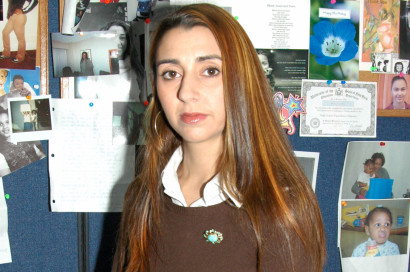There’s A Saving Grace For Victims of Prostitution
by Heather Robinson

From The New York Post

They’re teenagers and young women. They like to braid each other’s hair, and to do glittery arts-and-crafts projects. Some are as young as 12 or 13. Many hope to receive an iPod for Christmas, but would be happy to receive soft, pastel-colored sweat suits or nail polish and hair supplies.
They’re very much like other young girls across the United States, except for one terrible difference: They have been victims of commercial sexual exploitation by adult men.
Girls Educational and Mentoring Services (www.gems-girls.org), a New York City-based nonprofit, serves females who range in age from 12 to 24. Founded in 1998 by British-born Rachel Lloyd, a survivor of sexual exploitation — usually prostitution and forced prostitution, including of a minor — it’s the only organization in New York state specifically designed to serve girls and young women who have experienced commercial sexual exploitation and/or trafficking.
Since Lloyd founded the group, it has served thousands of girls and young women, more than 400 in 2015 alone.
On her long road from victim to survivor to advocate, Lloyd’s work helped ensure passage of the New York State Safe Harbor for Sexually Exploited Children Act, which in 2008 became the first law in the nation to protect, not punish, sexually trafficked and exploited youth.
But even here in New York, which has, with the help of Lloyd and other child-welfare advocates, led the way toward national reform (since passage of the Safe Harbor Act, numerous other states have followed with similar legislation), there’s still much work to be done.
In New York City there are an estimated 2,200 children victimized by commercial sexual exploitation annually, according to the New York State Office of Children and Family Services. But some advocates say the real numbers are probably higher.
“The OCFS only estimated youth who came into contact with services; there’s likely to be a number of youth who don’t,” Lloyd points out.
Many victims start out believing their pimp is a boyfriend (which was Lloyd’s experience) and may be lured from places like foster homes, or families where they are abused or neglected by substance-addicted parents. Sometimes as little as a dinner at McDonald’s, a charm bracelet or a well-timed compliment can be enough to lure girls.
Average age of initial victimization: 13 years old.
Lloyd and the counselors who work for her strive to build girls’ self-esteem.
“These girls and young women have been valued by pimps and johns for the wrong reasons, and we want them to see they are smart and strong and beautiful and can grow and have any future they desire,” she says.
The battle includes changing public perception, Lloyd says. Language can be damaging — or empowering. Lloyd dislikes terms like “prostitute” because she believes such language dehumanizes victims of exploitation and abuse, making it easier for abusers (“pimps”) and consumers (“johns”) to rationalize their behavior, and to view these young women as an “underclass” of “disposable” girls and women. Such labels also make it harder for girls and women to leave “the life,” she says.
“The word ‘prostitute’ conjures a certain set of images, and implies a level of choice that is not present when an underage girl is being used for sex,” Lloyd says.
The nonprofit offers housing to girls and young women who are 16 and older. To help ensure those under 16 “get a full range of support,” Lloyd’s group works with city and private foster-care agencies to better serve sexually exploited girls through staff trainings, counseling and a mentorship program for adolescent girls supported by older alumnae of the program.
This past year, eight young women in the program graduated from college. Several alumnae have become staff at the organization, and this year one graduate will enter medical school at SUNY Stony Brook.
If one were to drop in this week, he or she would see girls working on Christmas tree ornaments, making a gingerbread house — and sharpening their resumes.
“It feels really normal and family-like and loving; that is the environment we have worked to create,” says Lloyd. “We have a Christmas party planned; we’ve got one male staffer — our bookkeeper — so we have a Santa every year. We’ve been working on gifts the last couple months. For a lot of girls this will be the only gift they get at Christmas; we recognize a lot don’t have family support and GEMS is a surrogate family.”
While it may not be the first cause people think of this holiday season, the organization relies on the private sector, including foundations and individual donors, for the majority of its funding.
As is written on the cover of her riveting memoir “Girls Like Us,” which chronicles her harrowing journey from victim to survivor, Lloyd continues to strive for a city, and a world, where “girls are not for sale.”
This entry was written by Heather Robinson and posted on December 23, 2015 at 11:14 am and filed under Features. permalink. Follow any comments here with the RSS feed for this post. Keywords: . Post a comment or leave a trackback: Trackback URL. */?>



